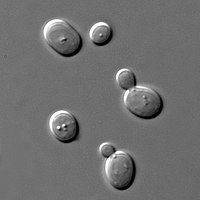
Photo from wikipedia
Effects on soil Collembola of Cu, Zn, Pb, and Cd pollution from Cu smelters over 40 years were investigated in paddy fields from an area of Eastern China. We compared the… Click to show full abstract
Effects on soil Collembola of Cu, Zn, Pb, and Cd pollution from Cu smelters over 40 years were investigated in paddy fields from an area of Eastern China. We compared the field effects to those observed in single-species laboratory tests employing the hemiedaphic collembolan Folsomia candida and the epedaphic Sinella curviseta obtained from laboratory cultures and exposed to field-collected polluted soil. The results indicated that different collembolan species responded differently to the pollution in the fields and could be divided into sensitive, indifferent, and tolerant types accordingly. The abundance of sensitive species decreased as the pollution increased, but this was not the same for indifferent and tolerant species. The dominant species changed from sensitive to tolerant species as the pollution increased. The reproduction of F. candida and S. curviseta was most sensitive to the contaminated soil compared to growth and survival; the sensitivity of the two species was similar. The growth was more sensitive than the survival for F. candida but not for S. curviseta. The growth and survival of F. candida were much more sensitive than those of S. curviseta. Sensitivity of field populations of F. candida (EC10 31 [15–46]) and hemiedaphic species Folsomia quadrioculata (EC10 52 [0.7–102]) were comparable with sensitivity of the reproduction of F. candida in the single-species tests (EC10 21 [14–27]), suggesting that single-species test based on laboratory cultures and field soil could be used to link laboratory and field data and then reflect the field situation. S. curviseta could be used as an epedaphic species in single-species tests and F. quadrioculata as an indicator species for assessment of field effect.
Journal Title: Environmental Science and Pollution Research
Year Published: 2018
Link to full text (if available)
Share on Social Media: Sign Up to like & get
recommendations!